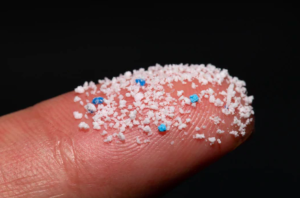Plastic plays a huge role in our daily lives – from plastic bags to products used and consumed – it makes up a majority of lived experiences and has reached some of the most remote parts of the world.
Our unsustainable use of plastic continues to have detrimental impacts on the health of the environment and species that inhabit it. It could come to a point of no return with permanent plastic contamination – unless we do something about it, fast.
“People are overusing some organic or natural material, everything they [can] get from nature to make their daily life [easier],” says Dr. Jing Ming. “We have to act quickly to find replacements for plastic things.”
Ming runs an independent science research service – Beacon Science and Consulting – and Ringgold Inc. – a service that aids publishers and intermediaries to improve the quality of their data – in Australia since 2019. Ming began investigating the field of microplastics nearing the end of 2019 – particles created through the fragmentation of larger plastic objects by mechanical apparition, UV radiation and temperature fluctuation for example.
Many researchers have focused on the role of black carbon – particles formed through the combustion of fossil fuels, biofuel, and biomass – in the acceleration of melting snow but have disregarded the contribution of microplastics.
“Since [microplastics] are not clear but coloured or translucent, they can absorb solar radiation. To what extent, we don’t know yet but raise this question to the public in the Eos paper,” Ming says. “We set out to do lab and field measurements to solve the puzzle.”
In the first stage of this research, Ming and his team will sample four or five glaciers in Xinjiang, in Northwest China to discover what’s inside of these large mountains of ice and snow.
They will extract several batches using three new preprocessing protocols that include using glass bottles, filters, and centrifuge samples to separate microplastic and black carbon particles before testing the snow.
“When microplastics deposit in snow, they absorb the solar radiation and reduce the surface albedo as other absorptive particles do,” Ming says. A decreasing albedo – a measure of how much light a surface reflects back into the universe without being absorbed – causes snow and ice to melt much quicker.
Melanie Bergmann a marine biologist and senior scientist from Bremerhaven, Germany, has also taken steps with her team of specialists to quantify the prevalence of microplastics in five ice floes in the Arctic Fram Strait. These surface samples, taken between 2015 and 2017, reveal up to 14,400 microplastic particles per litre of melted snow. She says the higher the concentrations, the more likely it would affect things like melting points.
The combustion of the molecular structure of plastics not only increases the amount of solar radiation absorbed but can cause toxins to become bioavailable. The erosion of garden gnomes or microplastics that are released from car tires which then swirl up into the air or run off into the water contribute to this viscous plastic cycle.
“Every plastic has additives of some sort, it could be a pigment because you want [the product] to be blue,” Bergmann says, holding up a blue coloured product. “Or it could be softness because you want [the product] to be nice and flexible. There are different chemicals that are added to get certain characteristics depending on the product that you want to produce – and these then can leak into the environment and have detrimental effects.”
According to Bergmann, people are concerned about what they eat because they’ve heard about the abundance of plastic in the water and fish but says it may actually be more dangerous to inhale the plastic that’s in the air.
“What we find in snow has been in the air before so it’s an indicator for air pollution and that we inhale as we do with other particles of course as well,” she says.
Bergmann is preparing a citizen science project where they hope to team up with individuals to take samples on beaches and in the Arctic that will be analyzed in the lab to quantify microplastic pollution. She says the smaller the plastic, the more dangerous it could be because then it could enter people’s cells or pass into their organs.
“It’s been found in human placentas so it can even pass to unborn children,” Bergmann says. “This is why the snow is interesting as well is that a great part of this would come from the atmosphere, from inhalation.”
Bergmann suggests that the main collective effort should be to cut plastic production which can be achieved through different methods like increased recycling but says that is just one tool in the toolbox – recycling alone will not get us out of this crisis.
“We need political intervention,” Bergmann says. “Whether it’s bans, financial incentives…there are different instruments, but it has to come from the top because then it helps the consumers to make the right decisions.”
The data found from Ming’s research next month will be used to reevaluate the role of black carbon in melting snow in prior studies and reports. They aim to find out how abundant microplastics are – to determine their separate role from black carbon and other light absorbers.
The impacts of microplastics on the health of species has been covered and now researchers are focusing on how it influences the climate. Following the expedition, Ming will suggest his peers fully reassess black carbons’ role in climate change and reconsider the role of plastic.




